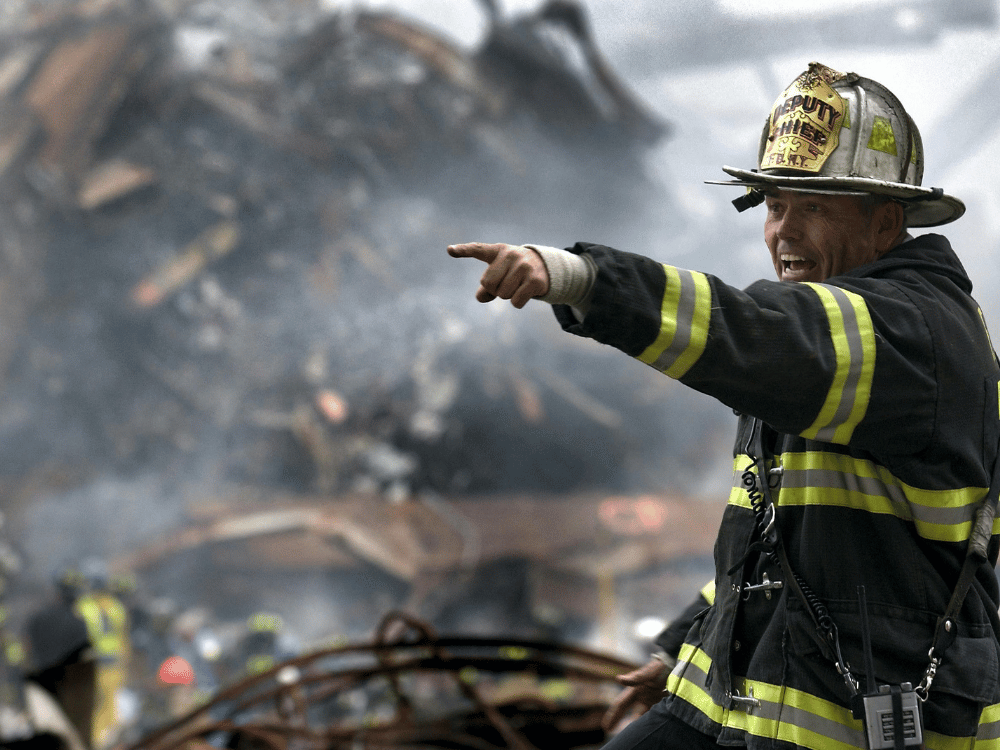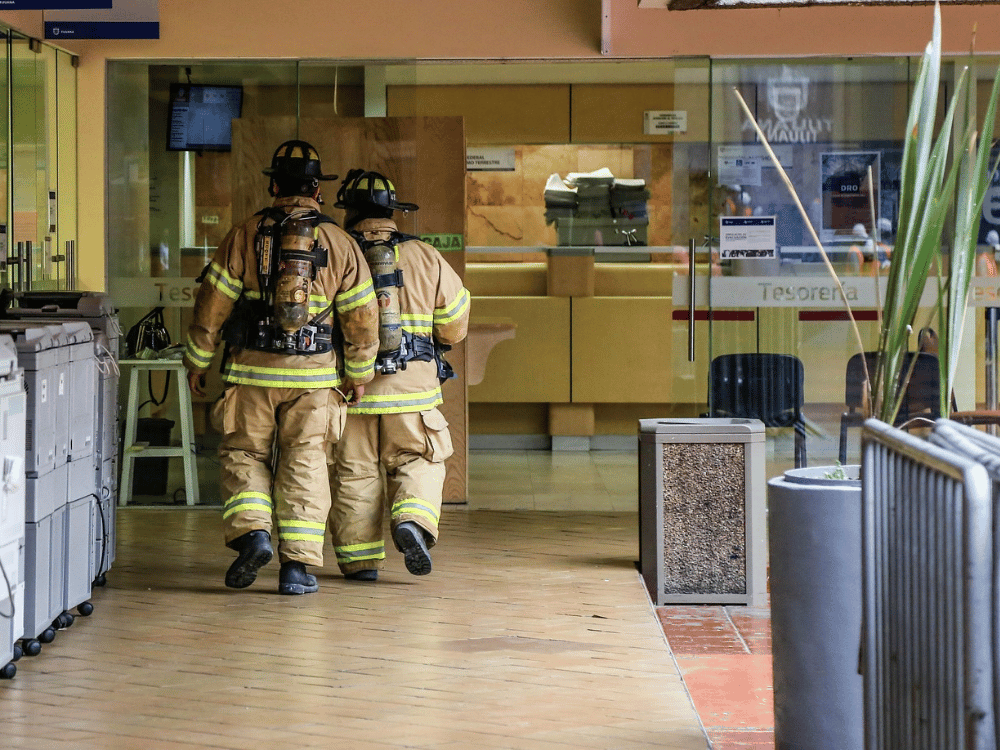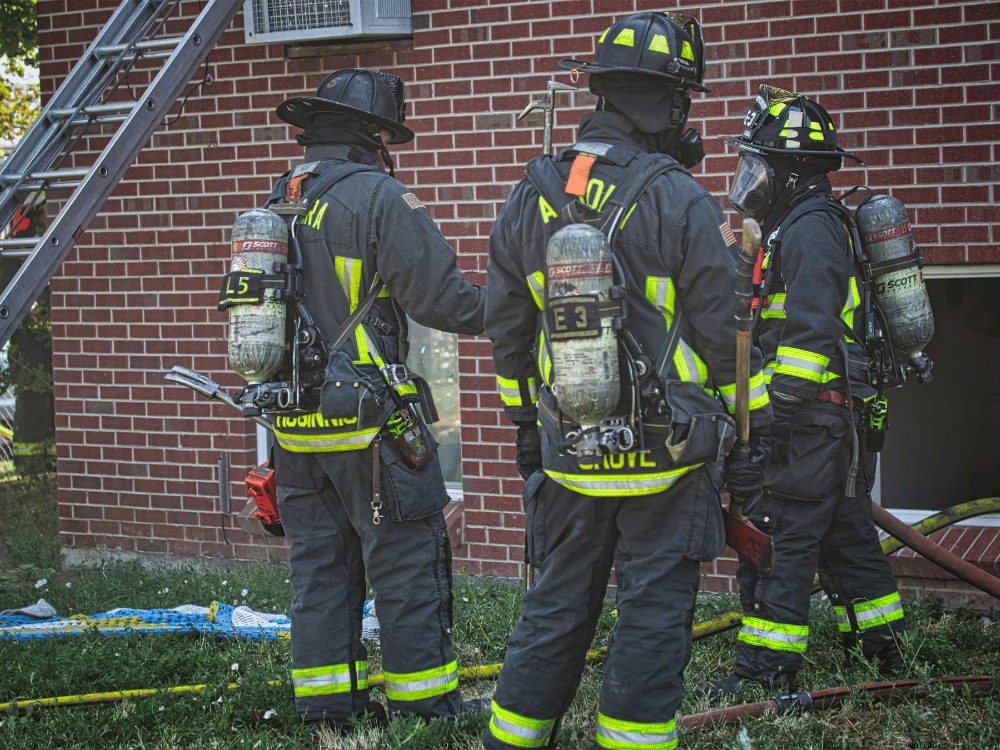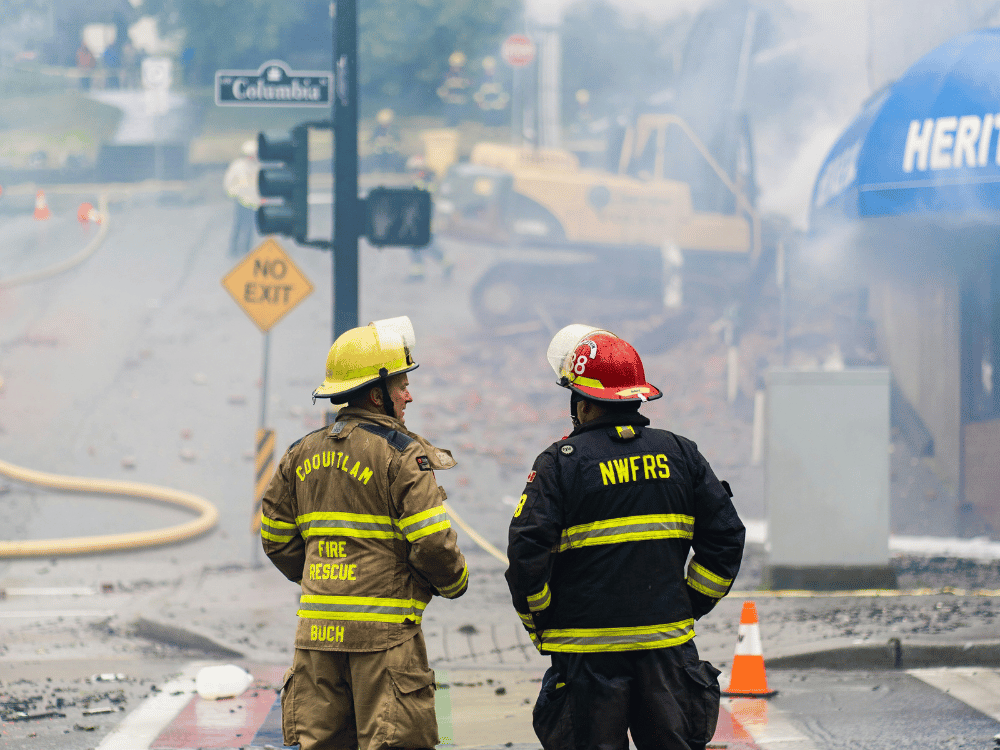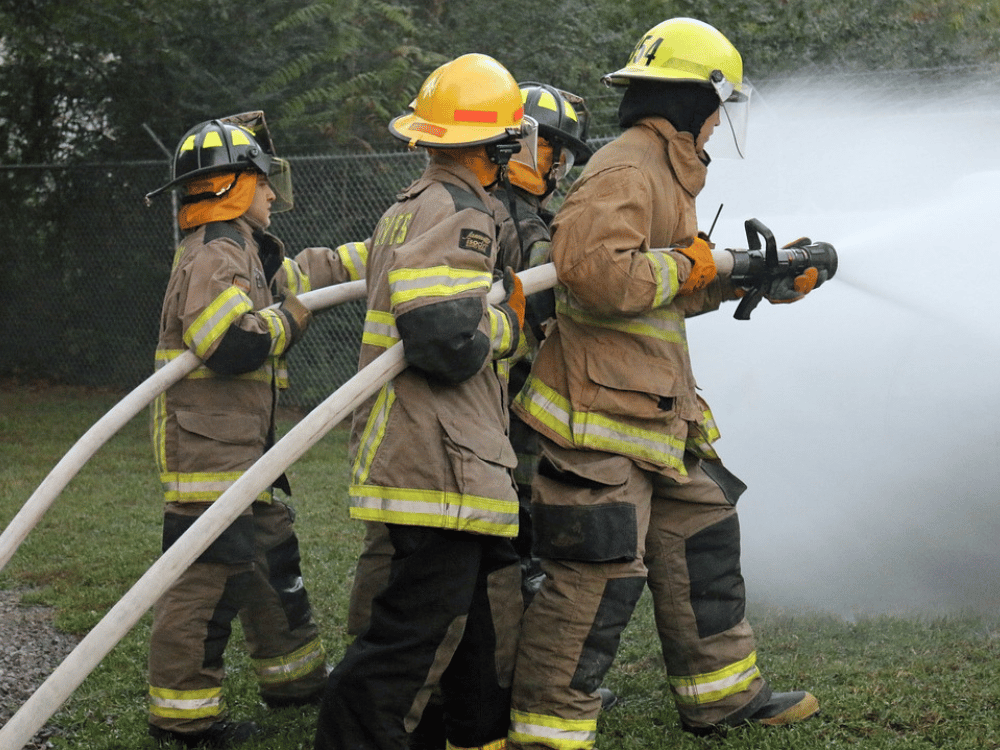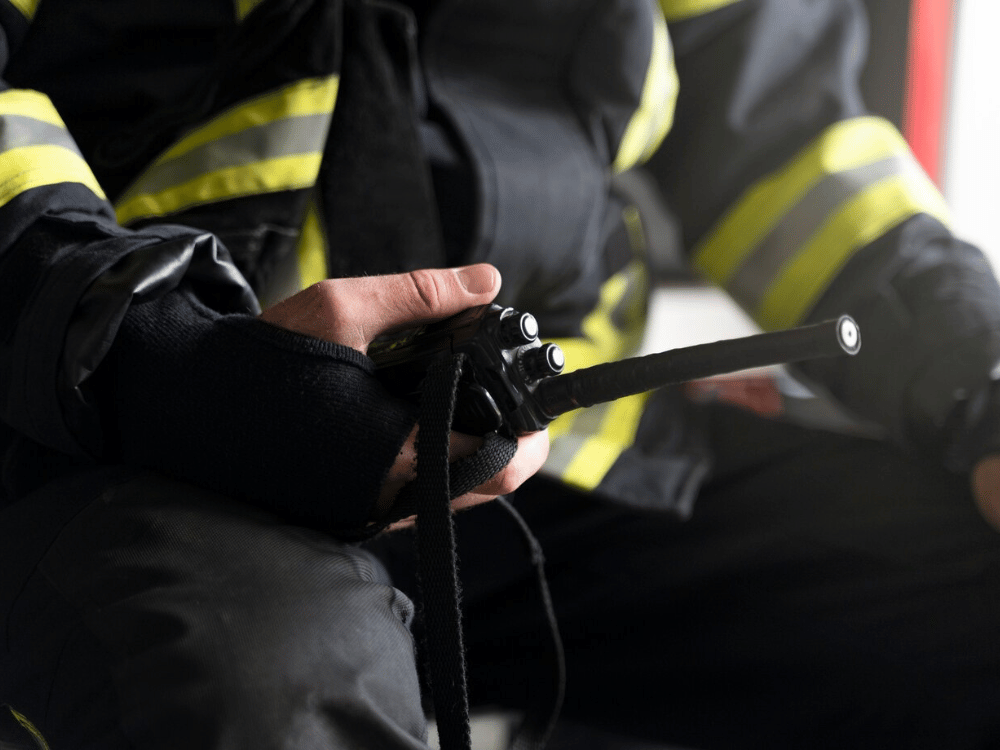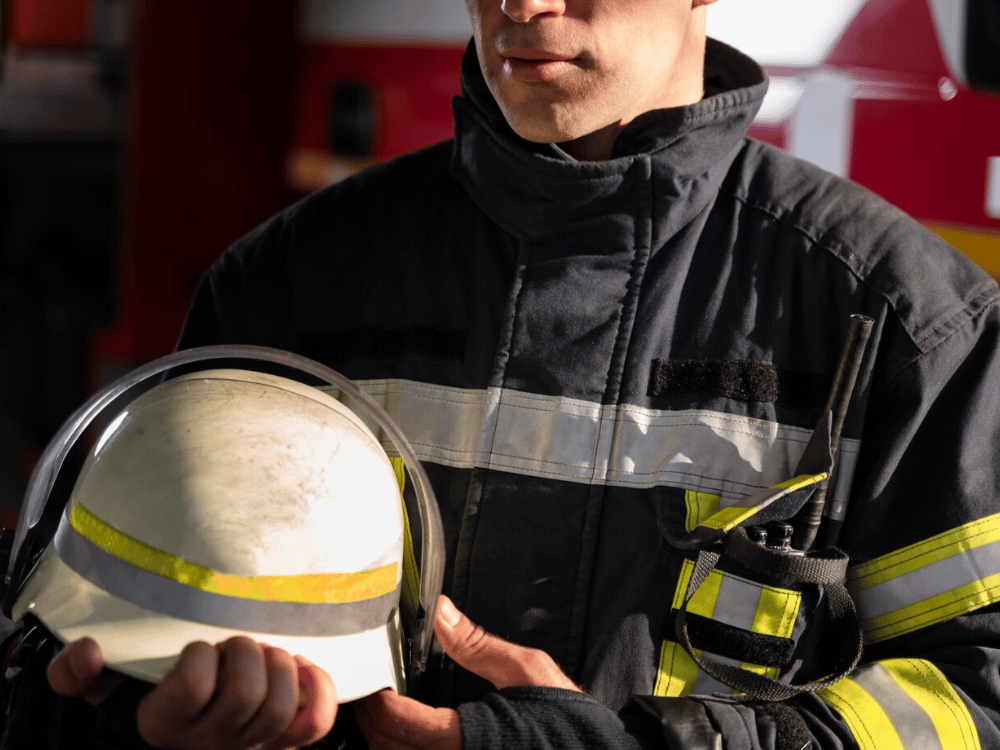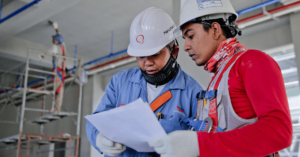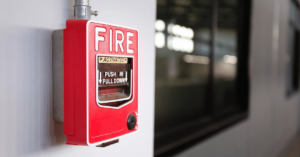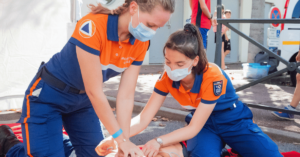The UK averages around 22,000 workplace fires a year. This statistic highlights that every business should always have a trained fire warden on site.
Fire wardens are crucial staff members for ensuring your workplace remains compliant with fire safety standards.
But the number of wardens you should have can differ depending on various circumstances.
So, how many fire wardens should there be in your workplace? What training do they need? And what are their main responsibilities?
What is a Fire Warden?
People often wonder, “What does a fire warden do?” A fire warden is a nominated person who, alongside the businesses’ “responsible person” (usually the owner, employer, or building owner), is responsible for implementing workplace fire safety standards.
These safe practices are set out by the Regulatory Reform Fire Safety Order 2005 and are in place to safeguard the occupants of a building from the risk of fire.
However, the number of fire wardens your business requires can vary depending on several elements. These include the type of site, industry, or buildings in question and the number of staircases on the premises, among other considerations.
How Many Fire Wardens Should There Be in Your Workplace?
The Health and Safety Executive or HSE fire safety regulations dictate that every non-domestic building should have one trained fire warden for every 50 employees.
However, as mentioned above, this number can alter depending on whether your workplace is at low, medium, or high fire risk.
- Low risk: Workplaces should have one warden per 50 employees.
- Medium risk: Workplaces should have one warden per 20 employees.
- High risk: Workplaces should have one warden per 15 employees.
But these numbers don’t quite cover a fire warden’s legal requirements in the UK when referencing buildings with many high-risk occupants, such as care homes.
How Many Fire Wardens Should There be in a Care Home?
According to a recent study, pensioners are 10 times more likely to fall victim to a fire than younger people.
As a result of those numbers, care homes require additional trained fire warden support. This could be:
- At least 1 warden for fewer than 15 employees/occupants.
- At least 2 wardens for 15-50 employees/occupants.
- Plus 1 additional warden For every 50 employees/occupants thereafter.
Trained fire warden numbers in care homes may also need to fluctuate to cover for the below circumstances:
- 1 fire marshal per area/floor.
- Every shift must be adequately covered.
- Add 25-50% to the number of marshals required to cover absence.
Should a Fire Warden be the Last Person to Leave the Building?
Yes. Because your business’s fire wardens are in charge of ensuring all staff leave the building in the event of a fire, they are the last to leave the building.
Part of the fire warden’s role is to start the evacuation and sweep the building to ensure all occupants have safely evacuated.
Responsibilities like this highlight why having the correct amount of wardens for your business is so important.
How Many Fire Wardens Should There be in Your Workplace for 50 Residents?
As we covered earlier, depending on your workplace’s level of fire risk, you should have at least 1 warden for every 50 employees.
However, it might be necessary to improve that number in higher-risk environments such as care homes, building sites, nurseries, laboratories, or manufacturing plants.
So, what factors affect the amount of fire wardens you need?
Factors Influencing the Number of Required Fire Wardens
The number of fire wardens required by your business can depend on a range of variables that will be unique to your site.
We’ve outlined some of those typical factors below, but having your fire warden or responsible person conduct a fire risk assessment can determine how these factors affect your business and warden count.
Size and Layout of the Workplace
The size and layout of your building will have an impact on the number of required fire wardens.
A good rule is to ensure at least 1-2 fire wardens per building floor. This should cover your employee count and mitigate any risks affecting evacuation efficiency.
Nature of Business Activities
Environmental risks are specialist to your workplace. These could include heavy machinery that would need to be shut down before an evacuation could be actioned.
Additionally, large industrial sites like packing or manufacturing plants with large conveyor belts would need time to wind down production safely before initiating any drills.
Occupational Hazards
Following on from the last point, certain workplaces, such as car garages or laboratories, come with their own occupational hazards.
Working in these high-risk environments means you regularly come into contact with hazardous or combustible chemicals or substances.
The existence of this risk will require your fire wardens to also complete COSHH training.
Potential Environmental Risks
Depending on your industry sector, your business environment could be placed at greater risk than others.
For example, recent statistics from IFSEC (the International Fire and Security Exhibition and Conference) found that industrial premises such as manufacturing facilities, vehicle repair sites, and warehouses are the second most combustible non-residential buildings – behind private non-residential premises like garages or sheds.
Another possible example of environmental risks could be locations like quarries, or anywhere large vehicles are operated and stored in close proximity.
Risks of fire in these locations could have a far-reaching impact not just for people within the site.
Number of Employees Present
As we mentioned previously, the number of regular occupants of your site will require changes to the number of fire wardens you appoint.
Like with standard risk assessments, you need to have a good idea of how many people you have on-site regularly. Fire risk assessments should cover contractors, the self-employed, shift workers, any young or elderly people, and anyone asleep on the premises.
Industry-specific Recommendations
Like in care homes, each industry has different recommendations for fire warden numbers.
For example, a manufacturing plant or industrial site would reasonably require more fire wardens on shift than locations like gyms or leisure centres.
National Fire Safety Standards
The national fire safety standards dictate that every business should have a designated responsible person for fire safety and a ‘competent person’ responsible for conducting regular site reviews.
This competent person is your fire warden, meaning every site you own or manage should have a warden.
Additional Factors
Other factors affecting the number of fire wardens you need are complex buildings with long evacuation routes.
Additionally, if any of your employees are disabled, you may be required to improve your warden numbers.
Fire Warden Training Course
Fire warden training courses bring your team up to speed with everything they need to know about fire safety.
In addition to understanding fire risk, these courses also cover a fire warden’s proactive and reactive duties, including further definitions of when it’s safe and unsafe to tackle a blaze.
At TSW Training, we offer courses that prepare your employees for their fire warden responsibilities and give an understanding of key legislation such as the Fire Safety Order 2005 and the Health and Safety at Work Act 1974.
These courses are:
How Long Does Fire Warden Training Last?
Although the courses outlined above are considered more foundational or GCSE-level assessments on the wider professional health and safety qualifications landscape, each is an internationally recognised accreditation.
The HABC course is the shorter of the three, taking just a day to complete. However, the IOSH and NEBOSH courses are more in-depth on fire safety from a wider health and safety perspective.
The IOSH Managing Safely course takes around three days to complete, while the NEBOSH course can be passed in 10 days.
8 Primary Responsibilities of a Fire Warden
Did you know that around 44% of businesses fail to reopen after a fire? Statistics like this make the role of a fire warden even more important to ensure your business does not suffer that same fate.
But we can break the overall duties down into eight key responsibilities.
1. Conducting Routine Inspections
As part of an ongoing commitment to fire safety in the workplace, fire wardens are responsible for carrying out regular fire risk assessments.
These checks are designed to identify, analyse, and mitigate potential hazards.
2. Identifying Potential Fire Hazards
Part of the day-to-day duties of a fire warden is to stay across any new or ongoing fire hazards.
These responsibilities can be anything from ensuring electronic equipment is regularly tested to ensuring combustible or hazardous materials are stored safely.
3. Assisting with Emergency Evacuation Procedures
One major duty of the fire warden is to assist the business’s responsible person with emergency evacuation procedures.
These drills should be scheduled regularly to ensure all occupants understand emergency processes.
4. Coordinating Communication During Emergencies
One thing that can make or break an effective emergency response is communication.
Clustered or unclear directives can cause confusion and potentially life-threatening situations.
That’s why it’s incredibly important for the fire warden to coordinate communication and ensure instructions are relayed quickly and clearly.
5. Carrying Out Regular Fire Drills
As the old saying goes: “Practice makes perfect”. This is especially true of crucial processes like emergency responses or fire drills.
Not only do regular drills ensure that everyone knows their role, but they also give your fire wardens the confidence to complete their tasks.
6. Ensuring Proper Functioning of Fire Safety Equipment
Having effective firefighting equipment could be a life-saving assurance for your business.
Fire wardens should conduct regular checks to ensure your business has all the equipment below and that it’s operational.
- Extinguishers
- Fire blankets
- First aid kits
- Exit signage
- Emergency lighting
- Fire bells
- Smoke alarms
- Breathing apparatus
If you are in one of those high-risk industries, it may also be worth investing in a sprinkler system to help fight blazes.
7. Coordinating with Local Emergency Services
As we mentioned earlier, in the event of a fire, wardens will start evacuation procedures and sweep the building to ensure no one is left inside.
This places them in the perfect position to update emergency services on potentially how the fire started and whether anyone may still be inside.
8. Being First Responders for Fire Incidents
Fire wardens should also be trained in first aid, and their education must be kept up to date.
First aid training ensures wardens are able to administer any necessary initial treatment to injured parties before emergency services arrive.
Fire Marshal vs. Fire Warden
There are no legally distinguishable differences between the roles of a fire marshal and fire warden in the UK.
However, some define the differences as follows. Fire wardens start evacuation processes and conduct the final sweep to ensure the building is clear. Whereas, fire marshals ensure everyone proceeds to the designated evacuation points quickly and calmly. They are then in charge of conducting a head count.
Conclusion
The fire wardens your workplace requires can depend on several elements. However, under the Fire Safety Order 2005, all businesses are legally required to have one.
But it’s not enough to simply appoint a fire warden. You must ensure that the person has appropriate fire safety training, like the HABC Level 2 Award In Fire Safety, IOSH Managing Safely, or NEBOSH National General Certificate.
The good news is you can start studying them all with us today!

